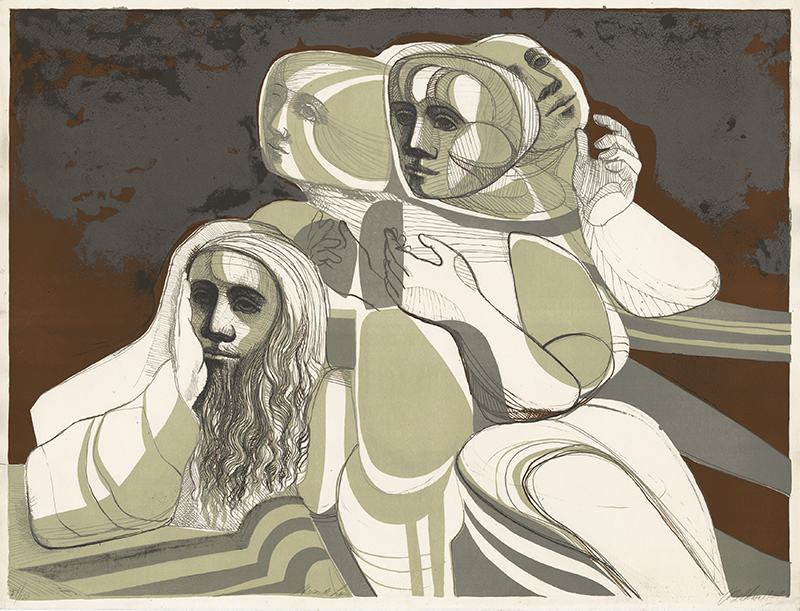
19th, 20th & 21st Century Fine Prints
707-546-7352 · fax 707-546-7924 · web: www.annexgalleries.com · email: artannex@aol.com
Moses De Leon by Arnold Belkin

Moses De Leon
Arnold Belkin
Moses De Leon
Arnold Belkin
1930 - 1992 (biography)"Moses De Leon", known in Hebrew as Moshe ben Shem-Tov, was a Spanish rabbi and Kabbalist who first publicized the Zohar. Modern scholars believe the Zohar is his own work, despite his claim that he took traditions going back to Shimon bar Yochai and committed them to writing. Belkin uses patterns for texture and movement suggesting the mystical beings at its center. His style draws on his strong background in muralism and spiritualism, these being foundational attributes of his life as the son of a left-wing Russian Jewish immigrant who found his artistic inspiration in the work of Mexico’s famed 20th century muralists, with whom he lived and studied for the majority of his life.
Belkin began his formal art studies at the Vancouver School of Art in 1945 at the age of fifteen. That same year he won first place in an art contest held by the Labor Arts Guild in British Columbia, and from 1947 to 1948 he studied at the Banff School of Fine Arts. At age eighteen he left for Mexico City, enrolling in the Escuela Nacional de Pintura, Escultura, y Grabado "La Esmeralda" (National School of Painting, Sculpture, and Printmaking), studying under leading Social Realists such as Jose Clemente Orozco, Carlos Orozco Romero, Agustin Lazo, and others. His most influential connection was with the artist David Alfaro Siqueiros, for whom he worked as a mural assistant. Siqueiros encouraged the young painter to enroll at the Taller de Ensayo de Materiales Plasticos (Plastic Materials Testing Workshop) where he furthered his studies in muralism, leading to several collaborative and personal mural commissions throughout Mexico in the 1950s. From 1954 to 1956 he learned printmaking techniques at Mexico City College under Lola Cueto and at Escuela de Artes del Libro with Pedro Castelar Baez, and took workshops in painting from Colombian artist Guillermo Silva Santamaria.
By the 1960s Belkin had established a career in Mexico, rarely traveling outside of his adopted home except to visit Europe and a few years spent in New York working on projects with Mexican and South American muralists, and he become a naturalized Mexican citizen in 1981. His work was primarily concerned with the sociopolitical events affecting Mexico, Latin America, and to some degree the U.S. and Europe during the 20th century. He co-founded several artists groups (Grupo de Interioristas and Nueva Presencia) as well as the Museo Latinoamericano in reaction to the lackluster representation of Latin American art found in major international museums and collections. The goal was to provide pushback against bourgeois art sensibilities in favor of art geared toward working class people.


